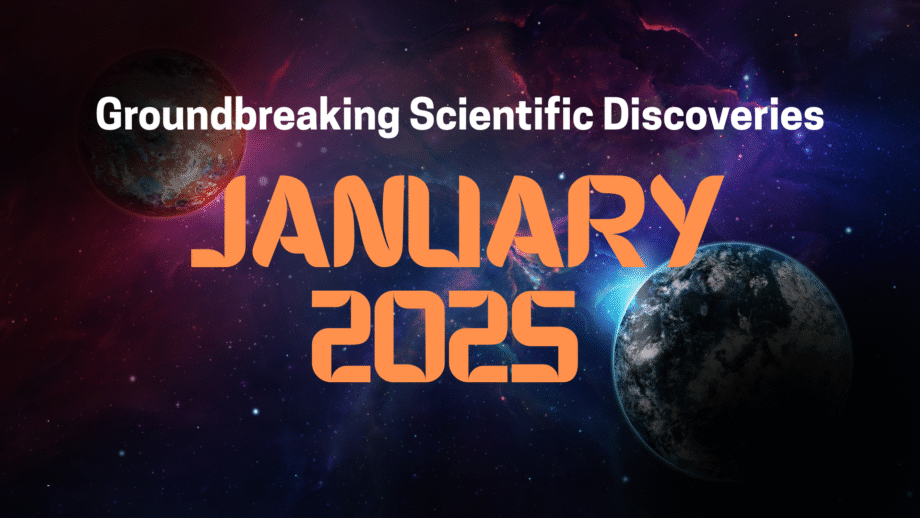A Glimpse into Groundbreaking Scientific Discoveries
January 2025 proved to be a vibrant month for scientific advancement, with researchers across various disciplines unveiling new insights and pushing the boundaries of human knowledge. From the depths of space to the intricacies of human biology, these groundbreaking scientific discoveries offer a tantalizing glimpse into the future of science and technology.
Exploring New Scientific Discoveries and Groundbreaking Research
The scientific community continues to deliver impactful findings, with several areas seeing significant progress in new research:

1. Scientific Discoveries in Space Tech & Astronomy
- Parker Solar Probe Data: Detailed telemetry data from the Parker Solar Probe's journey through the Sun's corona provided unprecedented insights into our star's extreme environment.
- Exoplanet Discoveries: Three new rocky exoplanets, all smaller than Earth, were detected around Barnard's Star, the closest solitary star to our own Sun. Additionally, exoplanet WASP-127b was found to have astonishingly fast wind speeds of up to 33,000 km/h.
- Jupiter's New Moons: The Minor Planet Center announced two additional moons of Jupiter, bringing the planet's total count to 97 and further expanding our understanding of the gas giant's complex system.
- Tianwen-2 Mission Launch: The China National Space Administration successfully launched the Tianwen-2 asteroid sample return and comet exploration mission, aiming to explore asteroid 469219 Kamoʻoalewa and comet 311P/PANSTARRS.
- Hubble Tension: New research confirmed that the universe is expanding faster than predicted by theoretical models, intensifying the “Hubble tension” and suggesting potential gaps in our understanding of cosmology.
2. Scientific Discoveries in Medical & Biological Sciences

- New Anti-Malaria Antibodies: Researchers reported the discovery of a new class of anti-malaria antibodies, offering potential new avenues for treatment and prevention.
- Human Cell Protein Map: A comprehensive map of protein locations within human cells was published, providing crucial insights into cellular responses to infections and other changing circumstances.
- “Construction Kit” for Human Cells: Bioengineers at Rice University developed a novel “construction kit” for building custom sense-and-respond circuits in human cells, opening doors for advanced therapies.
- Retinal Recovery Genes: A recent study highlighted the discovery of “pliancy genes” that play a significant role in retinal recovery, offering hope for treatments related to eye injuries and stress.
- Lifespan Extension in Mice: A combination of Rapamycin and Trametinib was found to extend lifespan in mice by approximately 30%, working more effectively than either drug alone.
- Targeted Cancer Therapies: Significant advancements in targeted cancer therapies, including new immunotherapy techniques, are showing promising results in harnessing the body's immune system to fight cancer cells more effectively.
Scientific Discoveries in Artificial Intelligence & Technology

- MatterGen: Microsoft researchers published details of MatterGen, a generative AI tool designed for materials design, hinting at faster innovation in material science.
- OpenAI's New AI Models: OpenAI launched two new AI models, o3 and o4-mini, furthering the rapid evolution of artificial intelligence capabilities.
- DeepSeek-R1: Chinese startup DeepSeek launched DeepSeek-R1, an open-source large language model (LLM) that rivals US giants in performance for tasks like chemistry, mathematics, and coding, and uses a “chain of thought” approach for improved reasoning.
- First Fully 3D Printed Microscope: The University of Strathclyde revealed the first fully 3D printed microscope, a cost-effective and rapidly produced device that could revolutionize access to scientific tools.
4. Scientific Discoveries in Earth Sciences & Environment

- Ancient Dinosaur Trackway: The biggest dinosaur fossil trackway ever found in the UK was reported in Oxfordshire, consisting of 200 huge footprints from the mid-Jurassic period.
- Oldest 3D Map: Researchers discovered what could be the world's oldest three-dimensional map in a cave in the Paris Basin of France, dating back 13,000 years.
- Electricity from Rainwater: Scientists reported a new method of generating electricity from falling rainwater, converting over 10% of the water's energy into electricity.
Scientific Discoveries Updates from Leading Publications
For those looking to subscribe to science journals' discoveries in January 2025 and explore new scientific discoveries more deeply, publications like Scientific American US and other leading US science journals have provided comprehensive coverage.
The January 2025 issue of Scientific American featured several compelling topics, including:
- The Search for Planet Nine: Discussing the ongoing quest to confirm the existence of a hidden world in our solar system using powerful new telescopes.
- The Origin of Joking: Studies of great apes offering insights into the evolutionary origins of clowning behavior.
- The Next Viral Plague: Exploring the implications of new bat viruses on human health, driven by climate and habitat crises.
- Engineering Our Dreams: Scientists learning to manipulate lucid dreams for potential therapeutic benefits, such as easing nightmares and improving sleep.
- Untangling the Vagus Nerve: Research delving into the healing potential of the brain's most interconnected nerve.
- Mission to Europa: Examining the possibility of finding life beyond Earth in the hidden ocean of Jupiter's moon Europa.
These diverse scientific discoveries underscore the relentless pursuit of knowledge and the profound impact that new research has on our understanding of the universe and our place within it. To stay abreast of the latest developments, we encourage you to regularly consult reputable science journals and news outlets.








